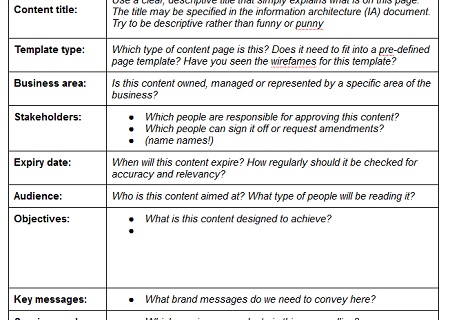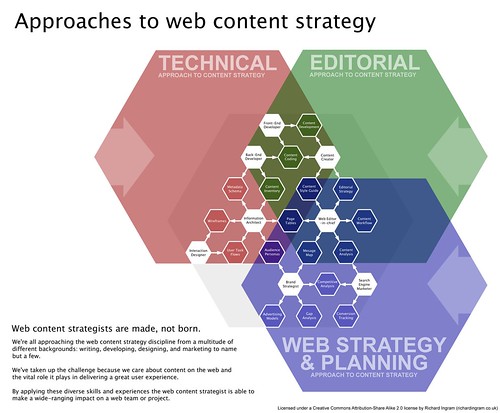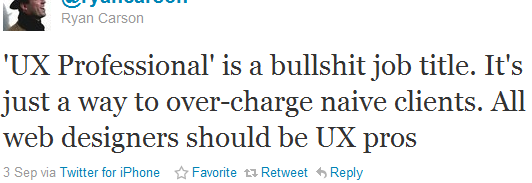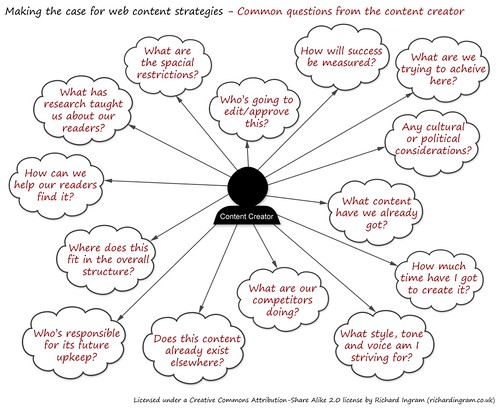Love this talk from Gerry McGovern at Content Strategy Forum 2011.
Gerry advocates focussing on our user’s tasks rather than thinking about content. Gerry gives good examples of websites bulging with unnecessary content that doesn’t help users achieve goals.
Gerry’s suggestion is worth noting, partly because there’s a danger that writers see words as the solution to every problem. But there are often cases where content is critical to the task. For example, if you’re in the market for a new web designer you’ll probably want to read a little bit about them, and see examples of their work (the content), before you try to contact them (the task).
Copywriters and content strategists are often at the front line of content decisions, and by thinking carefully about the purpose of every piece of content, we might be able to reduce the amount of clutter online.







